College Sports
What is NIL Go, and why is it the latest subject of debate among college sports leaders?
ORLANDO, Fla. — The man steps onto a raised platform, walks behind a podium and leans toward the microphone. Before him, more than 200 college athletic administrators shift to the front of their seats. For months now, they’ve been waiting for this moment. Advertisement “I’m Karl,” the man says, “with Deloitte.” Karl Schaefer is a […]
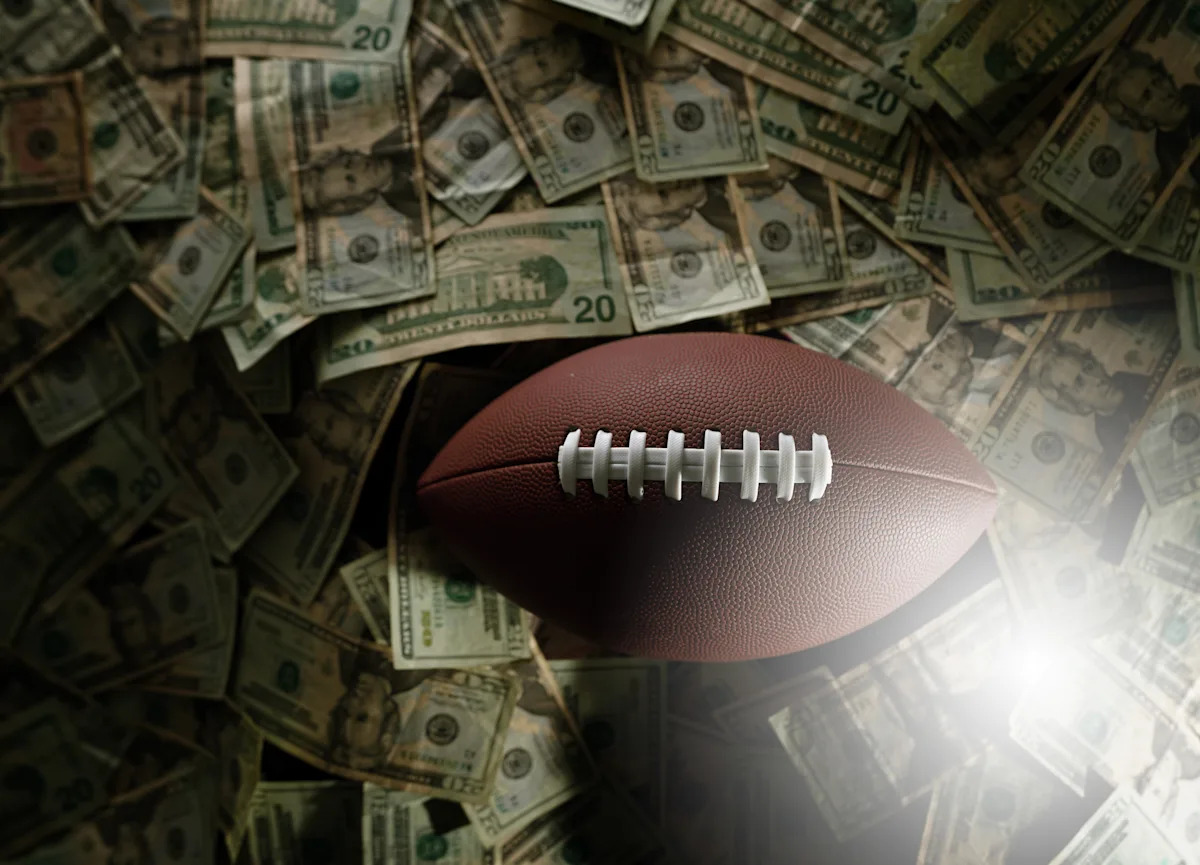
ORLANDO, Fla. — The man steps onto a raised platform, walks behind a podium and leans toward the microphone.
Before him, more than 200 college athletic administrators shift to the front of their seats. For months now, they’ve been waiting for this moment.
Advertisement
“I’m Karl,” the man says, “with Deloitte.”
Karl Schaefer is a young man with perfectly cropped hair, a sharp grin and slender frame. He is here to lead a 40-minute presentation on the single most talked-about concept of college athletics’ new revenue-sharing era: the Deloitte-run clearinghouse dubbed “NIL Go.”
Though it remains unsaid by those in power, the goal of NIL Go is quite clear: prevent booster payments to athletes that, for four years now, have been masquerading as commercial and endorsement deals.
As Schaefer flips through slides of the NIL Go software system, for the first time revealed publicly, whispers within the room build to murmurs. Attendees capture slides with photos. Some video the entire event. Others scribble notes on a pad.
How Deloitte and the new enforcement entity, the College Sports Commission, plan to prevent booster pay is the target of much criticism and fascination — plenty of it shrouded in secrecy for the last many months.
Advertisement
In central Florida, at an annual conference of administrators this week, the shroud was at least partially lifted. Not only was the platform’s interface shown on a giant projection screen during Schaefer’s presentation — including the six-step submission and approval process — but, in interviews with Yahoo Sports or during other public presentations, college sports executives who helped craft the system answered questions that, up to this point, had remained unanswered.
While many doubt that the clearinghouse will withstand inevitable legal challenges, administrators here provided legitimate reasons for why they believe in its long-term survival. Most notable of those, says NCAA president Charlie Baker, is that the clearinghouse’s appeals process — arbitration — is equipped with subpoena powers.
“They do have that power,” Baker told Yahoo Sports this week. “Arbitration typically has subpoena power and I’m pretty sure since this one sits inside an injunction, they will have it.”
Officials at the power conferences confirmed that “significant subpoena powers” exist under the arbitration appeals process, but those powers are less expansive than subpoena authority within a courtroom. The decision to use subpoena powers and how exactly to use them — limited or broad — is expected to rest with the arbitrator presiding over the appeals process.
Advertisement
A subpoena compels individuals or entities to produce evidence under penalty of law, such as turning over text messages, emails and phone call logs as well as testifying before investigators. It is one of the more important tools for officers of the law, such as police investigators — and something that was never available to the NCAA enforcement staff.
“We won’t have complete subpoena power, but if an athlete goes into arbitration … those records, you can get access to some of those records,” said Ohio State athletic director Ross Bjork, who is a member of a settlement implementation committee that helped construct the new enforcement entity.
“It’s going to be a new day.”
The algorithm
Back in the Deloitte presentation room, Schaefer is explaining the submission process for NIL Go. Athletes are required to submit third-party NIL deals of $600 or more using a web-based submission system, not unlike an online registration system for, say, a passport.
Advertisement
Shaefer explains, gesturing toward a giant projection screen, that the clearinghouse makes three determinations once a deal is submitted:
-
Is the third party an “associated entity” with the university, such as a booster, or a business contracted with a school like a university sponsor or apparel brand? If so, more intense scrutiny is applied in the vetting process. Public companies can, and many of them will, be deemed as associated entities.
-
Is the deal for a “valid business purpose?” The third-party business, brand or individual must be receiving true value from the activities, such as an autograph session, television commercial or speaking engagement.
-
Is the deal within Deloitte’s “range of compensation” paid to similarly situated individuals? This is perhaps the most criticized of the concepts. Deloitte created “the range of compensation” through an algorithm using fair market value analysis, comparing similar types of NIL deals struck between an athlete and the third party.
More is now known about that algorithm.
Clemson athletic director Graham Neff, one of the implementation committee members, details the factors used to form a compensation range: “Athletic performance is a big part of it. Your social media reach and following. Market — where schools are at. The reach of your school within said market.”
This will vary by school. Neff offers an example. “The reach of Georgia Tech in Atlanta is different than the reach of Georgia State,” he says.
Advertisement
Neff believes that a “majority” of NIL deals will derive from “associated companies,” as school sponsors, multi-media rights partners and individual alumni and boosters work to provide universities with additional compensation so they can exceed the $20.5 million revenue sharing cap that each school is afforded. Third-party NIL compensation that passes the clearinghouse does not count against the cap.
Even those who helped craft the new enforcement entity acknowledge that the system is attempting to do a very difficult thing: bring regulation to an enterprise that has, for four years now, seen little to no regulation or enforcement of athlete compensation.
“There’s some toothpaste back in the tube a little bit given the environment,” Neff said.
For example, Deloitte officials claim that 70% of past deals from booster collectives would have been denied in their algorithm, while 90% of past deals from public companies would have been approved. Deloitte has also shared with officials that about 80% of NIL deals with public companies were valued at less than $10,000 and 99% of those deals were valued at less than $100,000.
Advertisement
These figures suggest that the clearinghouse threatens to significantly curtail the millions of dollars that school-affiliated, booster-backed collectives are distributing to athletes.
“No one is trying to restrict someone’s earning potential, but what we’re trying to say is, ‘What is the real market?’” Bjork says. “Everybody you talk to about the pro market will tell you that NIL deals for pro athletes are really small. In the collective world, we created a false market.”
Denial, approval and arbitration
Displayed on the giant screen before hundreds of athletic administrators is the six-step clearinghouse submission and approval process.
Advertisement
Step 6 lays out the process for a player if his or her deal is denied by the clearinghouse because it either is not struck for a valid business purpose or it does not meet the compensation range.
(1) Revise and resubmit the deal so that the compensation amount falls within the algorithm’s range. For instance, if the clearinghouse deems that a submitted $1 million deal should be $500,000, the athlete can resubmit for $500,000 and the school, if it so chooses, can compensate the athlete for the other $500,000 through its revenue-share pool.
(2) Cancel the deal completely.
(3) Request arbitration as an appeals process.
Advertisement
(4) Accept the rejected deal as is. In this case, the athlete “may face enforcement consequences (e.g., loss of eligibility),” the Deloitte presentation slide reads.
According to settlement terms, attorneys for the plaintiffs (the suing athletes) and defendants (NCAA and power conferences) will work together to select a neutral arbitrator or arbitrators to preside over these cases. Individual arbitration processes are expected to last no more than 45 days.
In an interview last fall, plaintiff lawyer Jeffrey Kessler described the arbitration as a trial-like set of hearings in front of an arbitrator — the new enforcement entity on one side (NCAA and power conferences) and the athlete on the other side.
NCAA president Charlie Baker says the new NIL enforcement process will add accountability to the system, as long as athletes and schools follow the rules. (Photo by Kevin Dietsch/Getty Images)
(Kevin Dietsch via Getty Images)
How an arbitrator rules may “depend on what evidence” each side produces, Kessler said. As Baker and others have noted, that evidence may now be generated through limited subpoena power.
Advertisement
But one lingering question remains: Will an athlete’s school fight alongside him or her in the case? “I expect that if the athlete pursues it, the school will support the athlete and help provide the athlete with counsel to help represent them in that challenge,” Kessler said.
Penalties for NIL violations
Implementation committee members say they are finalizing a “menu” of penalties for those found to commit violations within this new revenue-sharing era, most notably those found to have (1) circumvented the cap with old-fashioned cheating or intentional or accidental miscalculations; and (2) tampered with another college athlete or prospect who is under contract.
Officials decided against using a set penalty matrix as the NCAA currently does (Level I, Level II, etc.). Instead, they are providing the new College Sports Commission CEO, Brian Seeley, with the flexibility to choose penalties from a wide range of options, depending on the individual circumstance.
Advertisement
“Those penalties being worked through are going to be significant and are going to be different than any penalties we’ve had previously,” said new Michigan State athletic director J Batt, a member of the implementation committee.
An example of a new kind of penalty is a reduction in transfers that a school can acquire from the portal, Bjork says. But there are others. A postseason ban remains among the penalties, said Desiree Reed-Francois, the Arizona athletic director and implementation committee member.
There are also stiff fines — multi-million dollars in value — that may be levied against schools, administrators and coaches. Suspensions, for coaches and administrators, are on the penalty menu as well.
“The fines are substantive,” Reed-Francois says.
Advertisement
One penalty is off the table. Administrators say that reducing a school’s revenue-share pool for subsequent years is not permitted. The settlement guarantees that schools are afforded the same revenue share pool.
Pushback
The clearinghouse has made its way to the U.S. Capitol.
During a congressional hearing over college sports on Thursday, Rep. Lori Trahan, a Democrat from Massachusetts, chided college leaders for instituting a new enforcement process that “guarantees people in power always win and the athletes who fuel this multi-billion dollar industry always lose.”
One of the witnesses in that hearing, Ramogi Huma, the executive director of the National College Players Association, chimed in as well, accusing the NCAA and conference leadership as wanting to “shut down boosters’ ability to pay players just to monopolize it” themselves.
Advertisement
College executives reject these notions and consider all of these elements — even the new enforcement process — as protected by a legally binding settlement. The new enforcement entity was not created by committee members in some “backroom,” Bjork says. The implementation committee only provided structure to an enforcement piece that is “codified” within the settlement.
“There are processes here that have been approved by the court and the plaintiffs and the defendants that people are going to be expected to follow,” Baker told Yahoo Sports. “Given so much of what’s been going on in the third-party space hasn’t been accountable or transparent, and has made a lot of people outside of college athletics a lot of money, I can understand why there might be some grumpiness about this.”
Soon, power conference schools — and others opting into the settlement — are expected to sign an affiliation or membership agreement. With this binding document, schools waive their right to sue over enforcement decisions and commit to settlement terms, even if their state laws contradict them.
The agreement — itself the subject of legal concerns, even from some schools — is an indictment on an industry of stakeholders that, for competitive reasons, are constantly scrambling to bend, break and shatter rules to gain even the slightest edge.
Advertisement
Earlier this week in Orlando, members of the implementation committee publicly implored schools to follow rules.
“This has to be a mindset change,” Bjork told the audience. “We see all the reports and naysayers, that ‘we’re going to go back to old-school cheating and all these things and that this is not going to work.’ This has to work.”
“This will work if we make it work,” Reed-Francois said. “We need to shift our mindset and make this work.”
Can it be done? But what if athletes decide not to submit any of their third-party deals at all?
“People will be turning in people,” Reed-Francois said. “There’s a lot more `transparency now.”
Advertisement
Back in the convention hall, Schaefer, from Deloitte, is winding down his presentation. He thanks the crowd before beginning to walk off the stage.
From among the crowd, a few raised hands emerge. Folks have questions.
Others in the audience remind the hand-raisers of something announced before the presentation began: The Deloitte employees are not taking questions.
College Sports
Arizona GymCats head coach John Court extended through 2028
There’s no way to describe Arizona gymnastics’ 2025 season except highly successful. The team produced the Big 12 co-Specialist of the Year, the WCGA Regional Assistant Coaches of the Year, and the Big 12 Coach of the Year. Over two months after concluding his season, that coach of the year has signed an extension to […]
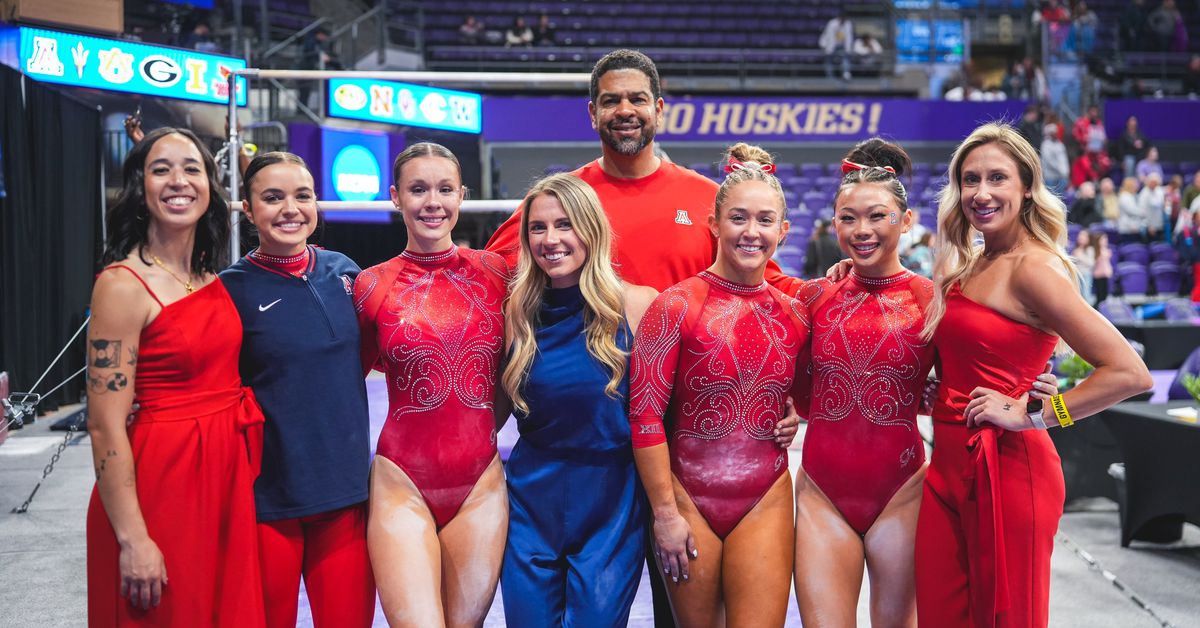
There’s no way to describe Arizona gymnastics’ 2025 season except highly successful. The team produced the Big 12 co-Specialist of the Year, the WCGA Regional Assistant Coaches of the Year, and the Big 12 Coach of the Year. Over two months after concluding his season, that coach of the year has signed an extension to continue leading the GymCats.
Arizona Athletics announced that John Court has been extended through the 2028 season on Thursday afternoon. His current contract was signed in 2023 and was due to expire in 2026.
Court has been at Arizona for 26 years. He served as an assistant under both Bill Ryden and Tabitha Yim. He finally took over the program after Yim left just before the 2017-18 school year. After serving as the interim head coach for most of the season, he was given the permanent title in March 2018.
Court’s teams improved each year and had a breakout season this year. The GymCats finished second in their first season in the Big 12. Their only conference losses came to Utah in both the regular season and at the conference championships.
The team then accomplished another first. They advanced to the NCAA regional finals for the first time since the postseason format changed in 2019, pulling off an upset over Georgia to take second in their session. They also defeated Arizona State for the third time this season. It made them one of the last 16 teams standing.
Court’s extension follows the announcement of assistant Kylie Kratchwell’s promotion to associate head coach on June 18. She shares that title with Court’s longtime assistant Taylor Spears. The pair joined first-year assistant Shelby Martinez in earning the WCGA’s regional staff honors for the South Central Region.
Lead photo courtesy of Arizona Athletics
College Sports
Minnesota prospects for the 2025 NHL draft
117 William Belle, right winger, Minnetonka (Shattuck-St. Mary’s), USNTDP, Notre Dame 135 Nolan Roed, center, White Bear Lake, Tri-City (USHL), St. Cloud State 143 Bobby Cowan, right winger, Edina, Madison (USHL), Western Michigan 144 Brendan McMorrow, left winger, Lakeville (Benilde-St. Margaret’s), USNTDP, Waterloo (USHL), University of Denver 146 Blake Vanek, right winger, Stillwater, Wenatchee (Western […]
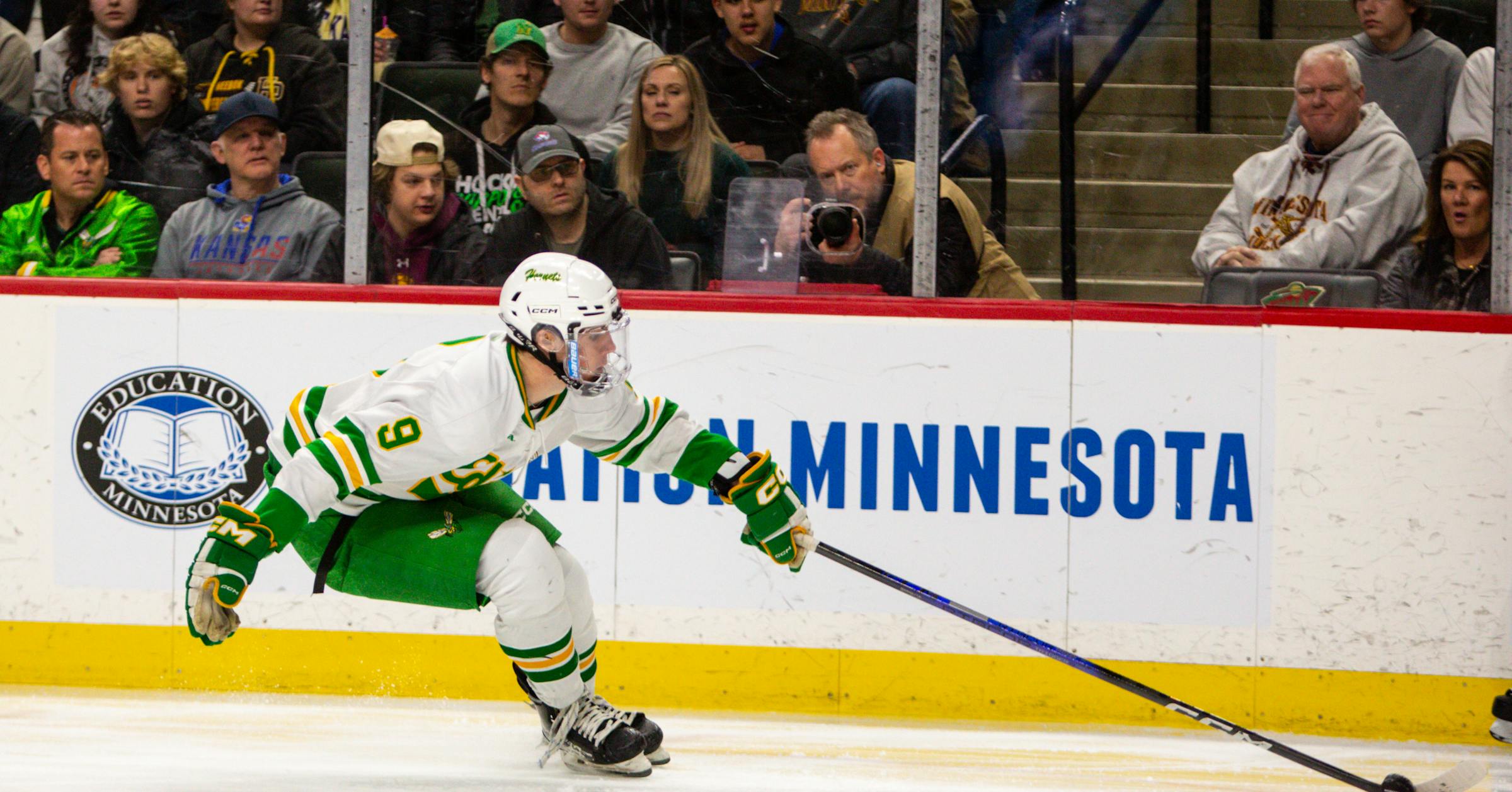
117 William Belle, right winger, Minnetonka (Shattuck-St. Mary’s), USNTDP, Notre Dame
135 Nolan Roed, center, White Bear Lake, Tri-City (USHL), St. Cloud State
143 Bobby Cowan, right winger, Edina, Madison (USHL), Western Michigan
144 Brendan McMorrow, left winger, Lakeville (Benilde-St. Margaret’s), USNTDP, Waterloo (USHL), University of Denver
146 Blake Vanek, right winger, Stillwater, Wenatchee (Western Hockey League), uncommitted
152 Jacob Kvasnicka, right winger, Burnsville (Wayzata HS), USNTDP, Minnesota Gophers
College Sports
Michigan hockey lands two more commitments from Canadian major junior players
Michigan’s hockey program has landed two more commitments from Canadian Hockey League players. Winger Jacob Larose of the Drummondville Voltigeurs in the Quebec Maritimes Junior Hockey League and center Jimmy Lombardi of the Flint Firebirds in the Ontario Hockey League announced their verbal pledges to the Wolverines on Thursday. Larose, 20, will join the Michigan […]
Michigan’s hockey program has landed two more commitments from Canadian Hockey League players.
Winger Jacob Larose of the Drummondville Voltigeurs in the Quebec Maritimes Junior Hockey League and center Jimmy Lombardi of the Flint Firebirds in the Ontario Hockey League announced their verbal pledges to the Wolverines on Thursday. Larose, 20, will join the Michigan for the 2025-26 season, while Lombardi, 18, will play one more year with the Firebirds before beginning his college career.
The Wolverines continue to tap into a new pool of prospective student-athletes, with players in the three CHL leagues eligible to play at the NCAA level for the first time.
Previously, they were banned from competing in the NCAA because the governing body of college athletics considered them professionals since they received stipends from their major junior teams.
Michigan has been busy recruiting in Canada, receiving six verbal pledges from CHL players this offseason. Larose should add some offense to head coach Brandon Naurato’s lineup next season. The 5-foot-9 Quebec native totaled 26 goals and 61 points in 63 games last season split between Drummondville and Victoriaville. His best season in the QMJHL came in 2023-24, when he registered 38 goals and 80 points in 67 games.
Lombardi is the second Firebird to commit to Michigan in as many days, following defenseman Matthew Mania’s announcement Wednesday. The 6-foot Lombardi (no relation to former Firebirds forward and Red Wings draft pick Amadeus Lombardi) had 13 goals and 45 assists in 63 games for Flint last season and is a projected mid-to-late-round pick in this week’s NHL draft.
The Wolverines, who missed the NCAA Tournament last season for the first time since 2019, will have a new-look roster in 2025-26. They are bringing in at least 10 freshmen and have added three transfers.
College Sports
Russell Sage College Names Geri Seif Head Women’s Lacrosse Coach
Women’s Lacrosse | 6/26/2025 9:30:00 AM Story Links ALBANY, N.Y. – Russell Sage College Athletics announced the hiring of Geri Seif (Battle Creek, Mich.) as its next Head Women’s Lacrosse Coach. “I could not be more grateful to the Russell Sage search committee, athletic department, and the women’s lacrosse team for giving me this […]
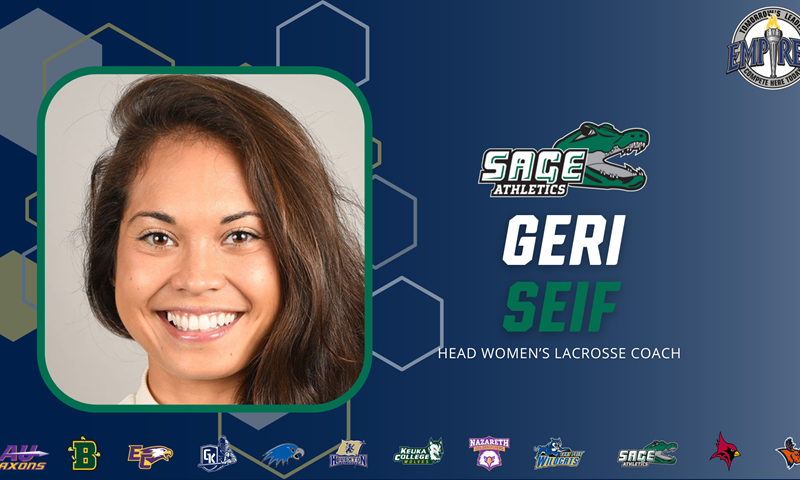
Women’s Lacrosse | 6/26/2025 9:30:00 AM
ALBANY, N.Y. – Russell Sage College Athletics announced the hiring of Geri Seif (Battle Creek, Mich.) as its next Head Women’s Lacrosse Coach.
“I could not be more grateful to the Russell Sage search committee, athletic department, and the women’s lacrosse team for giving me this opportunity to lead this program,” said Seif. “I want to thank my family, my mentors, and past players that helped me get to this point, I couldn’t have done it without them! I’m so pumped to start recruiting future Gators and I look forward to building a strong successful culture for years to come.”
“Russell Sage is thrilled to bring Geri Seif to the Swamp as our head women’s lacrosse coach ,” said RSC Director of Athletics Jim Lyons. “With a coaching philosophy that emphasizes positivity and a growth mindset, Geri will become a strong role model for each of the athletes in her program. I am certain that with the consistency and leadership she can provide our team, that Russell Sage women’s lacrosse can become a fixture in the Empire 8 Conference playoffs for years to come.”
Seif comes to Albany from nearby Union College, where she served as an assistant coach since 2022. The Garnet Chargers, under the direction of former RSC Head Coach Alyssa Treanor, have reached the Liberty League Championship Tournament semifinals in each of the past four springs, including a trip to the finals in 2025.
Before Union, Seif was the head girls’ lacrosse coach at East Grand Rapids High School for one season and as an assistant coach at Aquinas College (NAIA) for four years. She led East Grand Rapids to a 23-2 record and a MHSAA Division II State Championship during her one year at the helm, while helping the Saints to a WHAC Tournament semifinal appearance during her final season.
Seif played collegiately at Olivet College, serving as a four-year captain for the Comets. She led the team to the best season in program history as a senior, scoring a school-record 50 goals with 10 assists for a record 60 points in 2015. A two-time All-MIAA second-team honoree, she is the school’s all-time leader in goals (155), assists (19), points (174), shots (374) and ground balls (126), while also holding school single-game records for goals, assists and points.
She graduated from Olivet in 2015 with a bachelor’s degree in business administration with a marketing concentration.
ABOUT THE EMPIRE 8 CONFERENCE
The members of the Empire 8 Conference are committed first and foremost to the pursuit of academic excellence and the league is regarded as an outstanding NCAA Division III conference. The membership has distinguished itself among its peer group for its quality institutions, spirited and sportsmanlike competition, outstanding services and highly ethical policies and practices. Its commitment to serve the educational needs of its student-athletes is the hallmark of the E8. For more on the Empire 8 visit www.empire8.com.
EMPIRE 8 SOCIAL MEDIA
YouTube – Facebook – Twitter – Instagram
College Sports
LSU baseball’s Kade Anderson wins 2025 College Pitcher of the Year Award
LSU baseball’s Kade Anderson was named the 2025 College Pitcher of the Year by Baseball America on Thursday. Anderson is a sophomore pitcher from Mandeville, La., who has started in both of his seasons for the Tigers. As a freshman, Anderson made appearances as the midweek starter and as a reliever on the weekends. Then, […]
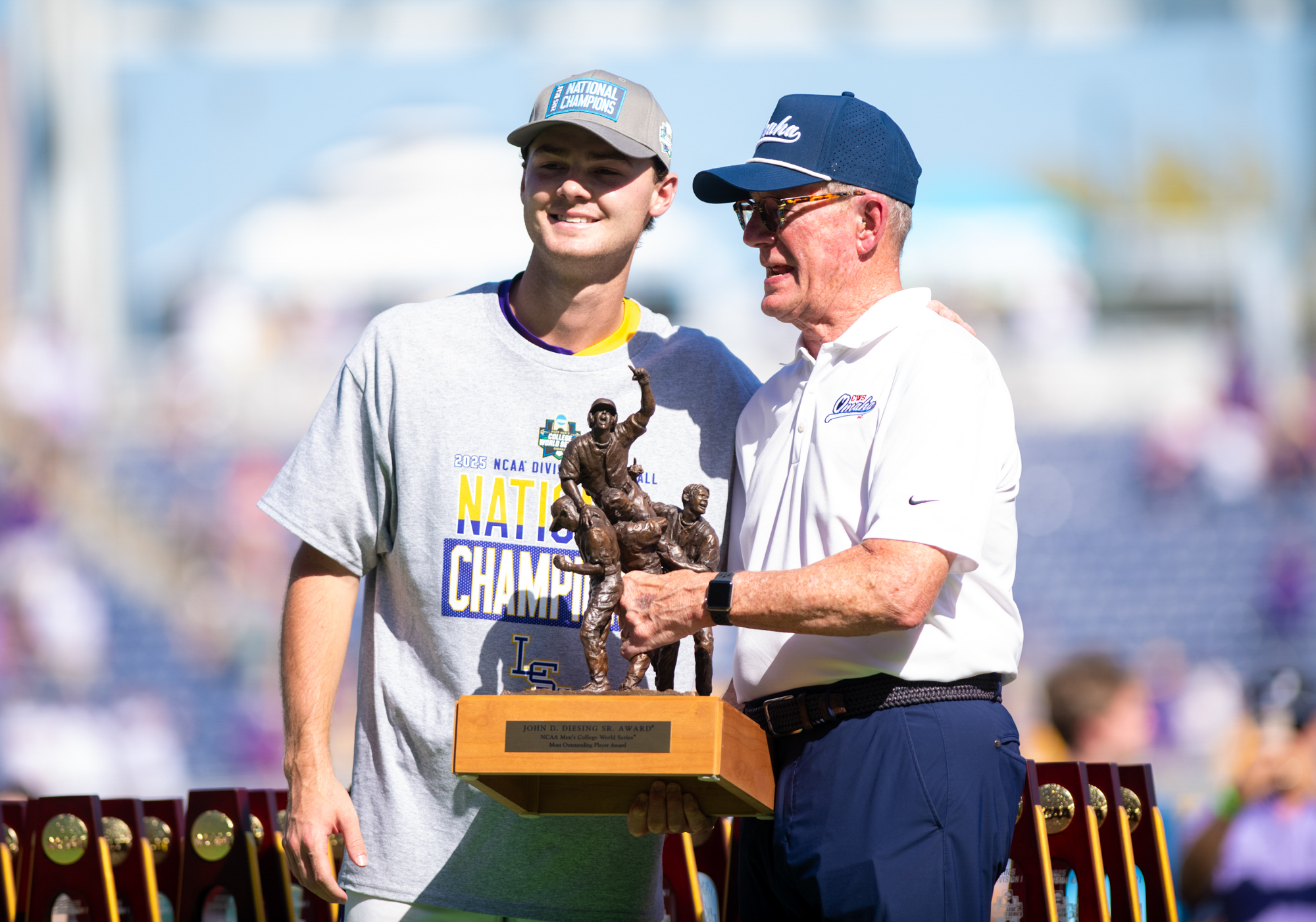
LSU baseball’s Kade Anderson was named the 2025 College Pitcher of the Year by Baseball America on Thursday.
Anderson is a sophomore pitcher from Mandeville, La., who has started in both of his seasons for the Tigers. As a freshman, Anderson made appearances as the midweek starter and as a reliever on the weekends.
Then, in his sophomore season, Anderson was called to the Friday night starter role, which he embraced and had a breakout season.
In the 2025 season, Anderson recorded a 3.18 ERA and a nation-leading 180 strikeouts across 119 innings. In 11 out of his 19 games, he recorded double-digit strikeouts.
When the stage got bigger, Anderson rose to the occasion as he allowed just one run and struck out 17 batters in the 16 innings he pitched during the College World Series.
He was named the tournament’s most outstanding player after securing LSU a win over Coastal Carolina with a complete-game shutout, just the third ever in the CWS finals history.
“His next pitch should be for some place in the Washington Nationals organization,” LSU head coach Jay Johnson said after the game. “There’s nobody closer to the major leagues than that right now.”
The Nationals hold the No. 1 pick in the 2025 MLB Draft, and Johnson thinks Anderson should be the first off the board. MLB Insider and former MLB scout Kiley McDaniel agrees.
In McDaniel’s most recent MLB mock draft, he named Anderson the first overall pick. According to MLB.com, Anderson is the No. 2-ranked prospect in the draft this year.
College Sports
House Settlement allows UMD hockey to increase scholarships – Duluth News Tribune
DULUTH — The Minnesota Duluth men’s and women’s hockey programs are planning to increase the amount of scholarships offered over the next three seasons, going from the equivalent of 18 full athletic scholarships in 2024-25 to 22 by 2027-28. UMD athletic director Forrest Karr said both teams will have the opportunity to offer up to […]
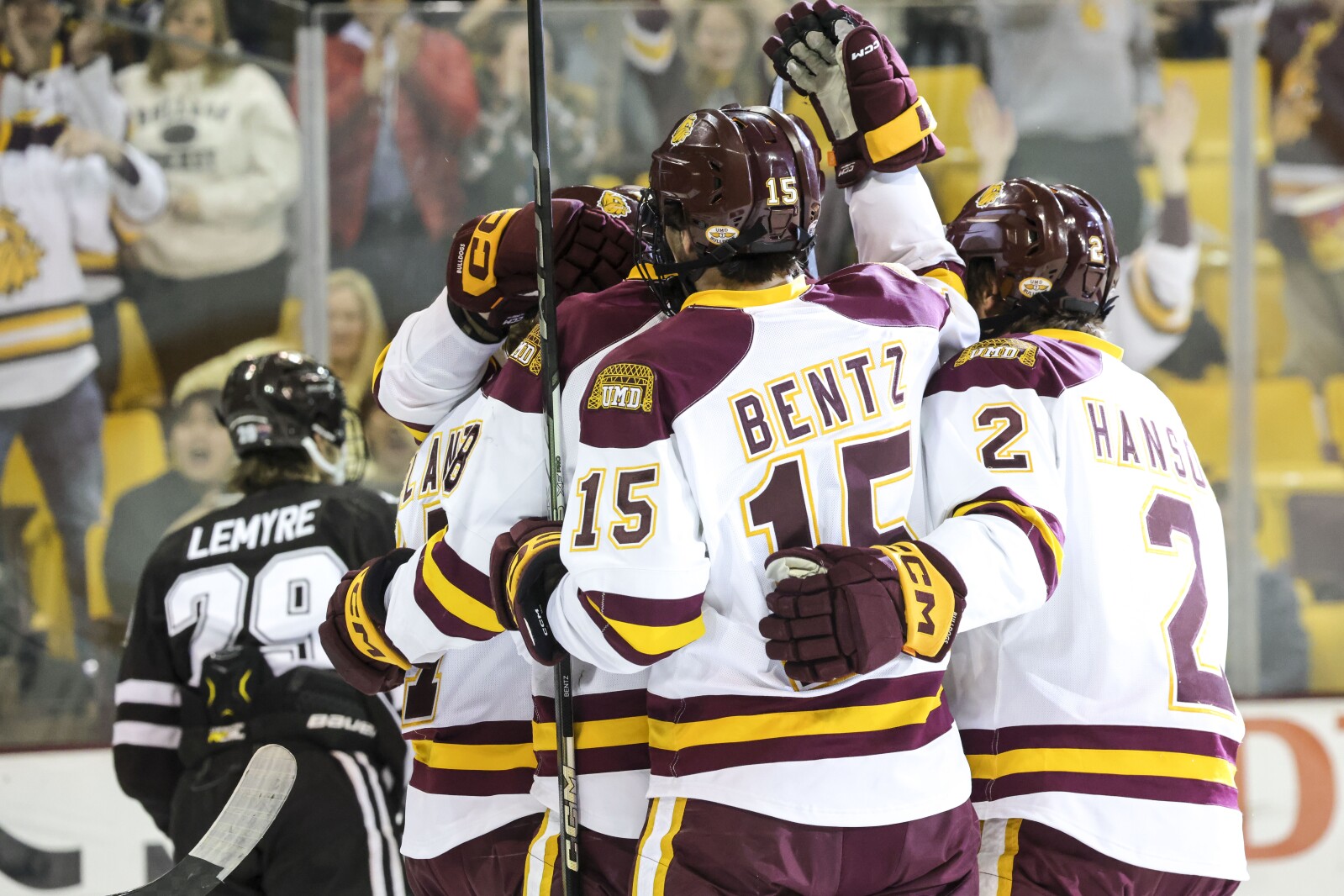
DULUTH — The Minnesota Duluth men’s and women’s hockey programs are planning to increase the amount of scholarships offered over the next three seasons, going from the equivalent of 18 full athletic scholarships in 2024-25 to 22 by 2027-28.
UMD athletic director Forrest Karr said both teams will have the opportunity to offer up to 20 full scholarships starting in 2025-26, 21 in 2026-27 and 22 in 2027-28.
The move comes after the
approval of the NCAA v. House settlement,
which removed scholarship limits in NCAA Division I sports, but imposed roster limits. Hockey rosters are capped at 26 players.
“There is still work to be done. This thing can change, as we’ve seen, very quickly,” said Bulldogs men’s coach
Scott Sandelin.
“We have a good plan in place and we’re going to continue to work toward that. It benefits both our programs to try and stay competitive in the world we’re in.”

Clint Austin / File / Duluth Media Group
In addition to increasing the amount of scholarships offered, the Bulldogs will begin paying out academic achievement awards to returning student-athletes and incoming transfers. Also known in college sports as
“Alston money,”
it follows a 2021 Supreme Court decision (NCAA v. Alston) that allowed schools to provide additional education-related benefits, including academic awards of up to $5,980 per year.
UMD is offering $3,000 per student-athlete in 2025-26. Karr said UMD hopes to increase the amount offered in the future. UMD’s academic achievement awards — which Karr said are treated like scholarships — will come from donations to the hockey programs via the University of Minnesota Foundation.
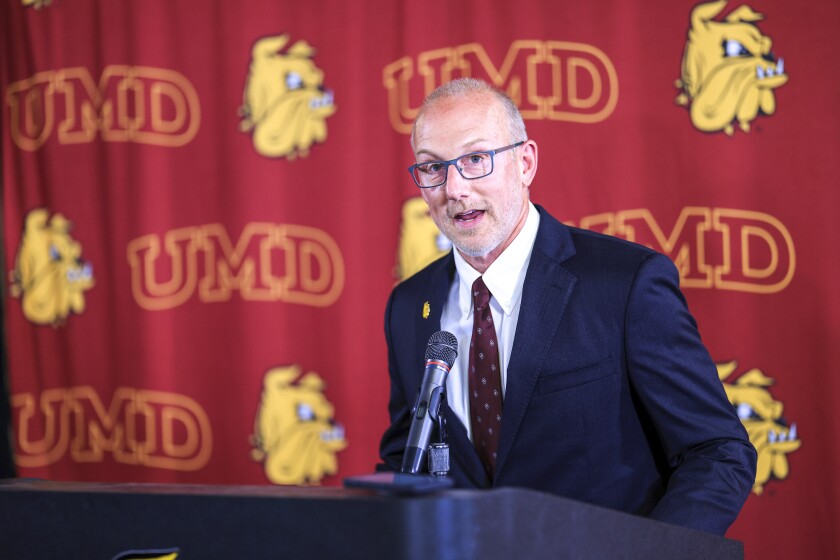
Clint Austin / File / Duluth Media Group
Many of the Bulldogs’ conference rivals are already offering Alston money, including
North Dakota in the NCHC
and the Big 10 schools in the WCHA.
“This investment is a vital step in attracting and retaining top-tier prospective student-athletes — individuals who excel not only in sport, but also in the classroom and in their communities,” UMD women’s coach Laura Schuler said. “By raising scholarship dollars and enhancing academic recognition, we are not only leveling the playing field, we are reaffirming our commitment to student success, well-being and the values that define our institution.”
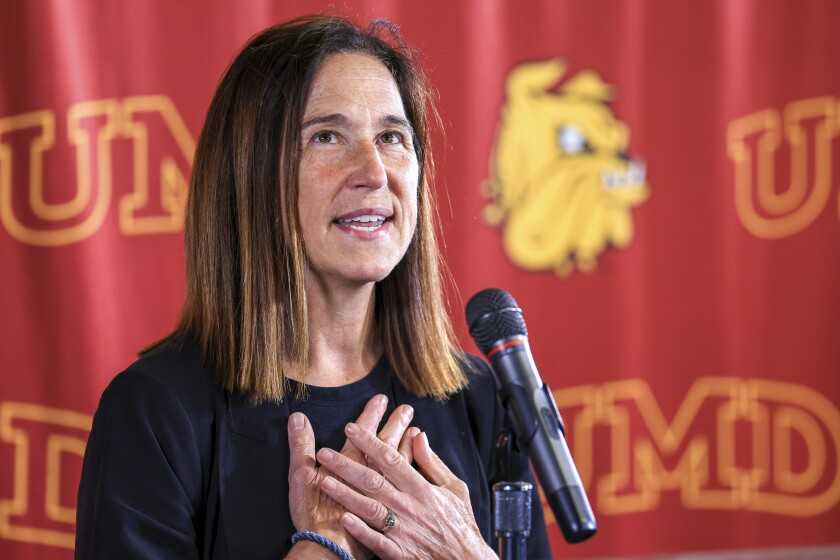
Clint Austin / File / Duluth Media Group
The House settlement stems from a 2020 lawsuit in U.S. District Court. The NCAA and its five biggest conferences at that time — the Big 10, Atlantic Coast Conference, Southeastern Conference, Big 12 and Pac-12 — were sued over back pay for name, image and likeness licensing and revenue sharing from broadcast agreements.
A $2.75 billion settlement was formally approved by a federal judge on June 6. The settlement includes a revenue-sharing agreement and name, image and likeness back pay for former student-athletes who began competing in 2016. Terms of the settlement — including the lifting of scholarship limits and implementation of roster caps — go into effect on July 1.
Schools have until June 30 to either opt in or opt out of the settlement. Minnesota, Wisconsin and Ohio State in the WCHA and Arizona State in the NCHC are required to opt in as defendants. UMD had the option to opt in for its Division I sports,
and announced its intention to do so back in March.
Denver also announced it will opt in. North Dakota
was going to opt out
for 2025-26,
but is reconsidering.
Terms of the House settlement only apply to the Bulldogs’ Division I programs — men’s and women’s hockey. The other Division II sports are not impacted.
“We have been planning for the House settlement to be approved for over a year, and we are now able to move forward,” Karr said. “Any additional adjustments that we make in the future will be informed by changes being made at other WCHA and NCHC programs.”
-

 Motorsports2 weeks ago
Motorsports2 weeks agoNASCAR Weekend Preview: Autódromo Hermanos Rodríguez
-

 Motorsports2 weeks ago
Motorsports2 weeks agoNASCAR Through the Gears: Denny Hamlin has gas, a border needs crossing, and yes, that’s a Hemi
-

 NIL3 weeks ago
NIL3 weeks agoShai Gilgeous
-

 Health3 weeks ago
Health3 weeks agoNew Era Begins As House Settlement Approved
-

 Motorsports2 weeks ago
Motorsports2 weeks agoNASCAR Race Today: Mexico City start times, schedule and how to watch live on TV
-

 Health2 weeks ago
Health2 weeks agoGymnast MyKayla Skinner Claims Simone Biles 'Belittled and Ostracized' Her amid Riley …
-

 High School Sports2 weeks ago
High School Sports2 weeks agoHighlights of the Tony Awards
-

 NIL2 weeks ago
NIL2 weeks agoTennessee law supersedes NCAA eligibility rule
-

 College Sports2 weeks ago
College Sports2 weeks agoFisk to discontinue history-making gymnastics program after 2026 | Area colleges
-
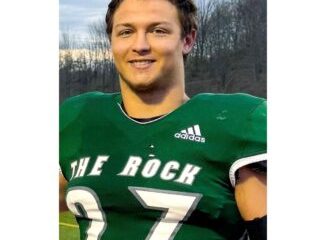
 Health3 weeks ago
Health3 weeks agoParents Create Fund in memory of son, raise awareness about suicide and mental health

















 Duke Freshman Year Highlights
Duke Freshman Year Highlights  | ESPN College Basketball
| ESPN College Basketball

















